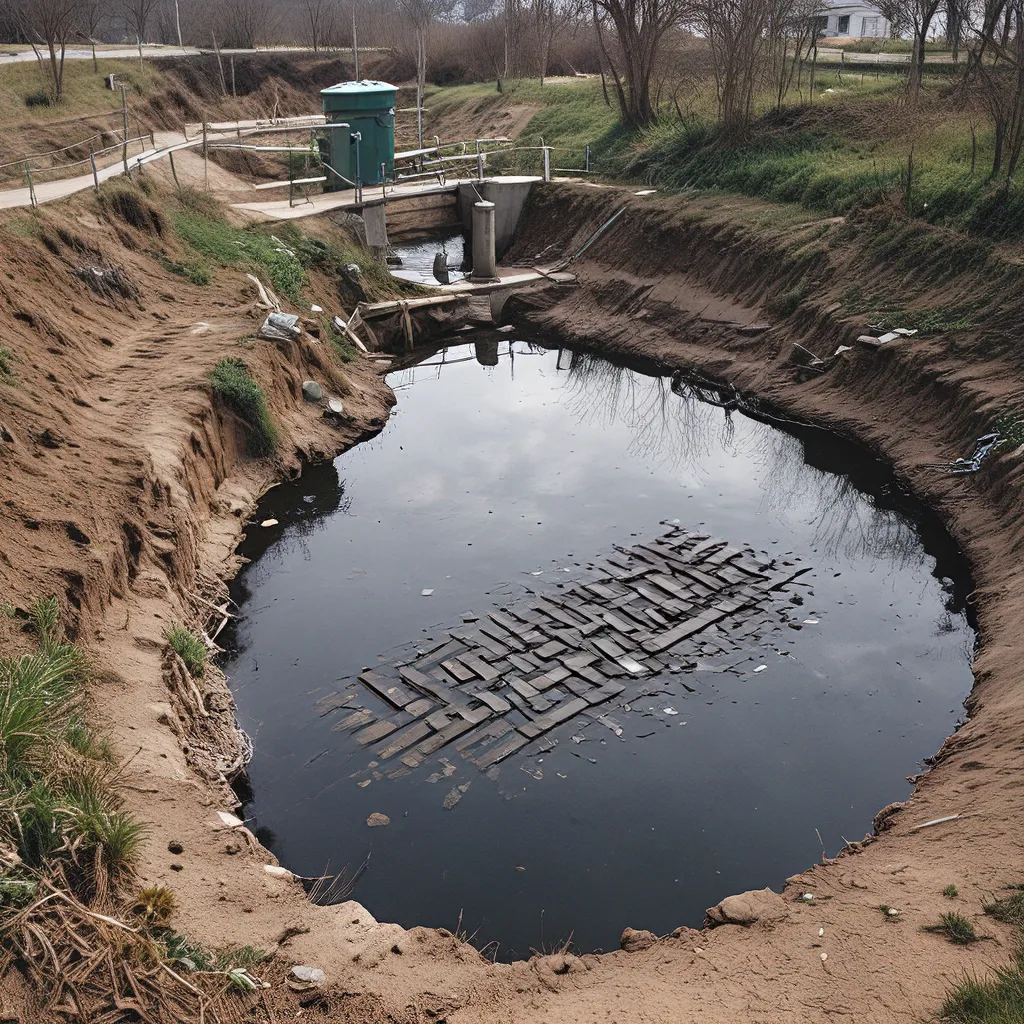
Ah, wastewater-based epidemiology – the unsung hero of the public health world! Who would have thought that the murky depths of our sewage systems could hold the key to predicting and managing disease outbreaks? Well, my friends, that’s exactly what this fascinating field is all about.
Let me take you on a journey through the world of wastewater surveillance, where we use cutting-edge science to stay one step ahead of those pesky viruses and bacteria. It’s like a real-life version of “CSI: Sewage Edition” – minus the cheesy one-liners and dramatic music, of course.
A Whole New World of Data
As you might have guessed, wastewater-based epidemiology is all about analyzing the stuff that flows through our sewer systems. And I don’t just mean the, well, you know – I’m talking about the tiny little genetic bits and bobs that can tell us a whole lot about the health of a community.
Think about it. Every time we, erm, “contribute” to the wastewater stream, we’re leaving behind a little piece of ourselves. And by “we,” I mean all of us – the sick, the healthy, the young, the old, and everyone in between. It’s like a veritable treasure trove of information, just waiting to be uncovered.
Researchers have found that by carefully analyzing the contents of our wastewater, they can detect the presence of all sorts of nasty bugs, from influenza to COVID-19. And get this – they can even measure the concentration of these pathogens, giving them a pretty good idea of how widely the disease is spreading in a particular community.
A Crystal Ball for Public Health
Now, you might be wondering, “Okay, that’s cool and all, but how does this help us actually manage disease outbreaks?” Well, my friends, the power of wastewater-based epidemiology lies in its ability to act as an early warning system.
Imagine this – you’re a public health official, and you start seeing a spike in the concentration of a certain virus in your community’s wastewater. Before a single person even steps foot in a doctor’s office, you already have a heads-up that something’s going on. That’s the kind of power we’re talking about here.
With this information in hand, you can then take proactive measures to contain the spread of the disease. Maybe you’ll ramp up testing efforts, or implement targeted public health interventions. Heck, you might even be able to predict and prepare for future outbreaks based on the trends you observe in your wastewater data.
It’s kind of like having a crystal ball, but instead of gazing into it, you’re peering into the depths of the sewage system. Talk about a career change, am I right?
The Race for Real-time Data
Of course, as with any cutting-edge field, there’s always room for improvement. One of the biggest challenges in wastewater-based epidemiology is the timeliness of the data.
Typically, it can take a few days or even a week to collect, analyze, and interpret the wastewater samples. And in the fast-moving world of disease outbreaks, that kind of delay can be a real hindrance.
That’s why researchers are constantly working on ways to streamline the process and get real-time data. They’re experimenting with new technologies, like automated sampling systems and advanced analytical techniques, all in the hopes of giving public health officials the quickest possible heads-up.
And let me tell you, the race is on. With the ever-present threat of emerging infectious diseases, the ability to detect and respond to outbreaks as quickly as possible is absolutely crucial. It’s like a high-stakes game of cat and mouse, but with microscopic foes and the fate of entire communities hanging in the balance.
The Future of Wastewater Surveillance
So, where does all this leave us? Well, if you ask me, the future of wastewater-based epidemiology is looking pretty bright. As the technology continues to evolve and the data becomes more reliable and actionable, I can see this field playing an increasingly crucial role in our public health landscape.
Imagine a world where we can predict and prevent disease outbreaks before they even start. Where we can use wastewater data to tailor our public health interventions to the specific needs of each community. It’s a pretty exciting prospect, if you ask me.
Of course, there will always be challenges to overcome – ethical considerations, data privacy concerns, and the ever-present need for interdisciplinary collaboration. But with the right mindset and the commitment to innovation, I believe we can overcome these hurdles and unlock the full potential of wastewater-based epidemiology.
And who knows, maybe one day we’ll even see a wastewater treatment service that incorporates real-time disease monitoring as part of its suite of offerings. Talk about a game-changer!
So, there you have it, folks – a deep dive into the fascinating world of wastewater-based epidemiology. From the treasure trove of data to the race for real-time insights, this field is truly pushing the boundaries of what’s possible in the realm of public health. And I, for one, can’t wait to see what the future holds.